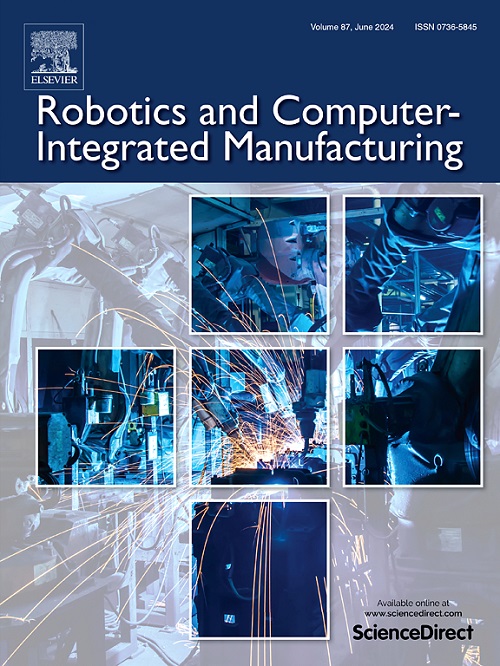A novel coverage path planning method based on shrink-wrapping technique for autonomous inspection of complex structures using unmanned aerial vehicle
IF 11.4
1区 计算机科学
Q1 COMPUTER SCIENCE, INTERDISCIPLINARY APPLICATIONS
引用次数: 0
Abstract
The inspection of large-scale structures can be challenging, time-consuming, costly, and dangerous. Autonomous robotic systems can provide an effective solution for performing such tasks by overcoming the negative aspects. In this paper, we present a novel coverage path planning method for complete sensor scanning of the outer surface of complex structures using an unmanned aerial vehicle (UAV) with a depth camera. The proposed method introduces a new approach by applying the shrink-wrapping technique to construct a 3D triangular mesh representing the structure's surface boundary. Viewpoints are then generated based on this mesh. Additionally, the triangles within the depth camera's field of view for each viewpoint are determined. The set covering problem (SCP) accepts the set of triangles covered by each viewpoint and reduces the number of viewpoints to decrease the flight distance and time. Finally, the coverage route that includes all the selected viewpoints is defined as the solution to the traveling salesman problem (TSP). We conduct extensive experiments to demonstrate the effectiveness of the proposed method across three different large-scale structures. The results show the validity and effectiveness of the proposed method.一种基于收缩包裹技术的无人机复杂结构自主检测覆盖路径规划方法
大型结构的检查具有挑战性、耗时、昂贵和危险。自主机器人系统可以为完成这些任务提供有效的解决方案,克服负面影响。本文提出了一种利用深度相机对复杂结构外表面进行全传感器扫描的覆盖路径规划方法。该方法引入了一种新的方法,即利用收缩包绕技术构建一个代表结构表面边界的三维三角形网格。然后根据这个网格生成视点。此外,深度相机的每个视点的视场内的三角形是确定的。集合覆盖问题(SCP)接受每个视点覆盖的三角形集合,并减少视点的数量以减少飞行距离和时间。最后,将包含所有选定视点的覆盖路径定义为旅行商问题(TSP)的解。我们进行了大量的实验来证明所提出的方法在三种不同的大型结构中的有效性。实验结果表明了该方法的有效性。
本文章由计算机程序翻译,如有差异,请以英文原文为准。
求助全文
约1分钟内获得全文
求助全文
来源期刊
CiteScore
24.10
自引率
13.50%
发文量
160
审稿时长
50 days
期刊介绍:
The journal, Robotics and Computer-Integrated Manufacturing, focuses on sharing research applications that contribute to the development of new or enhanced robotics, manufacturing technologies, and innovative manufacturing strategies that are relevant to industry. Papers that combine theory and experimental validation are preferred, while review papers on current robotics and manufacturing issues are also considered. However, papers on traditional machining processes, modeling and simulation, supply chain management, and resource optimization are generally not within the scope of the journal, as there are more appropriate journals for these topics. Similarly, papers that are overly theoretical or mathematical will be directed to other suitable journals. The journal welcomes original papers in areas such as industrial robotics, human-robot collaboration in manufacturing, cloud-based manufacturing, cyber-physical production systems, big data analytics in manufacturing, smart mechatronics, machine learning, adaptive and sustainable manufacturing, and other fields involving unique manufacturing technologies.

 求助内容:
求助内容: 应助结果提醒方式:
应助结果提醒方式:


